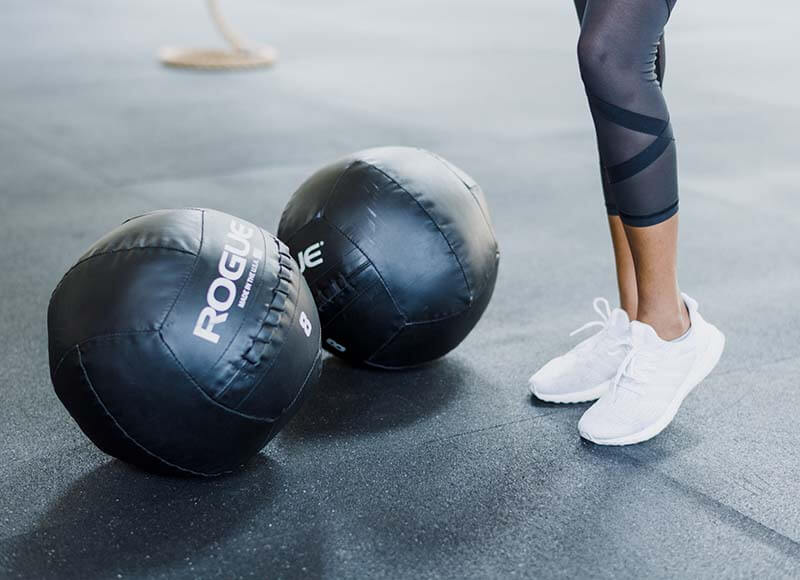Do Some Resistance Training
Look online casually and you’ll find countless resistance training programs promising to help you get lean, build muscle, and be “beach-body ready” for summer or that upcoming vacation to Cancun. Then comes the equipment—which can create even more confusion: dumbbells, kettlebells, resistance bands, bodyweight exercises, or some new, in-vogue piece of equipment that you “absolutely must have” to look like the model demonstrating it. My thoughts? It all works—if you use the equipment and do it consistently. I own every piece of equipment mentioned above, including Olympic weights and a Total Gym. But I have one standard routine that I follow twice a week without fail. The rest of the equipment is just window dressing. My routine is the same one I’d follow if all I had was a plain old-fashioned weight set. Like I said earlier, I know I’m not going to be another Arnold Schwarzenegger—my goal is simply to be fit.
Always do your homework when it comes to exercise equipment, and consult a certified personal trainer if you have any questions about proper form or the function of a particular machine.
The Program
Think of your body as being divided into two halves—upper and lower—connected by your pelvis and supported by your core. You also have a front and a back: chest and abdomen in front; back muscles, glutes, hamstrings, and calves in the rear. That’s basic anatomy, but it helps you understand how resistance training works.
Compound Exercises
Compound exercises recruit multiple muscle groups during the performance of a single movement. They primarily target the large muscle groups such as the legs, back, and chest. I perform two workouts a week—one for my upper body and one for my lower body.
Lower Body
Deadlifts – 3 sets of 10–12 repetitions using a hex bar, which helps position your body ideally for the movement. The deadlift works your glutes, hamstrings, quadriceps, core, and both your upper and lower back—and probably a few more muscles along the way. In short, it’s the most bang for your buck.
Squats – 3 sets of 10–12 repetitions using a barbell, dumbbells, kettlebells, sandbags, or resistance bands. I also do functional air squats every day. Squats target many of the same muscles as the deadlift, and they also engage your groin, hips, and calves.
A Word on Squats
Squats are the number-one exercise everyone should perform as they age. Here’s an excerpt from the AARP website that reinforces this point:
“The squat is the most important exercise for seniors,” says Eric Daw, a personal trainer dedicated to older adults and founder of Omni-Fitt in Toronto, Canada. “When you have to go to the washroom, that’s a squat. When you get in the car, that’s a squat. Every time you sit down or stand up, that’s a squat. If you don’t do them well, it affects the way you live.”
Squats strengthen all the muscle groups in your legs—including your calves, quadriceps, and glutes—as well as muscles in your lower back and core. These muscles provide the foundation for most activities of daily living.
They are the antidote to “soft couch-cushion syndrome”—those moments when you struggle to get up from a deep, old sofa. They also help protect your joints. As Denise Austin, one of America’s best-known fitness experts, says, “Squats are one of the best overall exercises. They strengthen the major muscles of the lower body we need to keep strong and protect two joints we rely on every day—our knees and hips.”
Upper Body
Rowing Motion – 4 sets of 15 repetitions using a combination of dumbbells, free weights, and a Total Gym. Rowing works your back, shoulders, biceps, and forearms.
Bench Press – 4 sets of 15 repetitions using barbells, dumbbells, and sometimes resistance bands or modified push-ups. Bench pressing and other chest exercises target the pectorals, triceps, deltoids, and even your biceps.
If you notice, the exercises have a front-and-back relationship. For example:
• Deadlifts work the hamstrings (posterior), while squats work the quadriceps (anterior).
• Bench presses target the chest, while rows target the back.
Small muscle groups are also worked indirectly as they assist the large muscle groups in each compound movement.
This entire routine takes me about 30 minutes. I do it on Tuesday and Thursday—lower body one day, upper body the next. For the rest of the week, I walk, jump rope, and do micro-workouts (as discussed in Habit One).
Final Thoughts
You can design your own resistance training routine; I’ve shared mine only as an example. Perform it twice a week, use good form, and be consistent. Do that, and you’ll avoid many of the pitfalls that come with aging.

